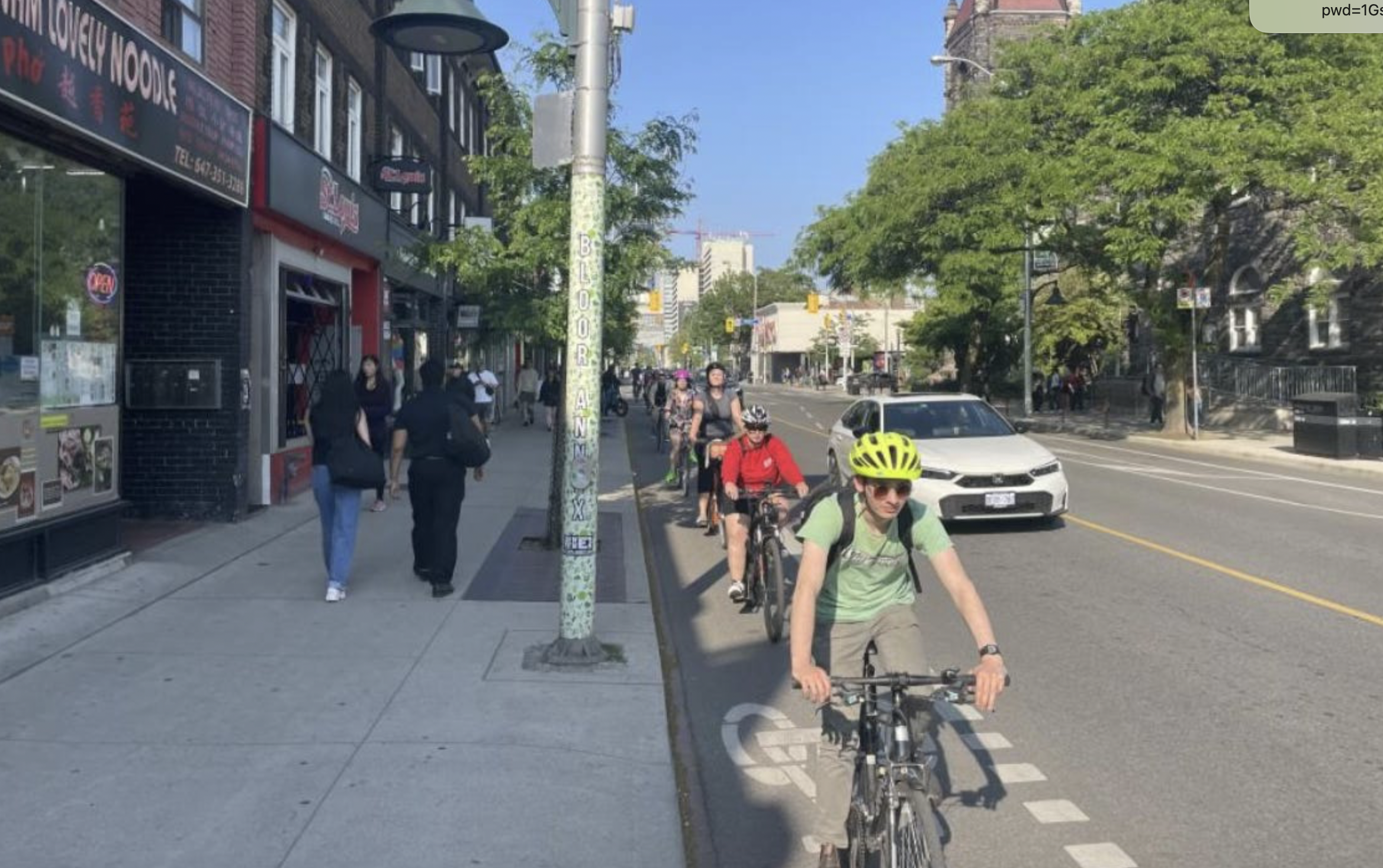Most people find it pleasant to bike with people they know. But there's growing evidence that Latino Americans are particularly interested in social biking.
Latinos and Latinas are far more likely than other Americans to say that friends or family are a major factor in their choice to ride.
The most recent study touching on this subject also discovered the obvious: Americans of every background enjoy social biking. But the preference was stronger among black respondents, and far stronger among Hispanic respondents:

Those results came from a 2014 mail survey to residents of the generally lower-income Roxbury neighborhood of Boston, conducted by Anne Lusk and a team at the Harvard Chan School of Public Health and published in May by Preventive Medicine Reports.
BetterBikeShare.org and Streetsblog covered aspects of this study in June.
This finding buried in the larger survey echoes a 2009 focus group of low-income residents of Portland, Oregon. It found that group riding was a major factor in bike use, and riding with children was of particular interest to people identifying as Hispanic or as African immigrants (in this case, Somali):

More recently, a different focus group of Hispanic New Jerseyites led by Charles Brown and James Sinclair of Rutgers University named "bonding with family" as the number one reason to bike.
Brown, who specializes in understanding biking barriers among people of color, said it was one of many such results he's encountered in person and in research literature.
"Everything I've done that has involved Hispanic participants, family has always been number one or number two," he said.
'With Latinos, every weekend is family'

We're not aware of any study that has looked directly at this apparent link, and none of these results are totally conclusive. In particular, it's possible that they underrepresent the attitudes of higher-income people.
But Tucson Vice Mayor Regina Romero, whose constituents in that city's first ward include a wide cross-section of Latinos, said the finding "rings true for sure" for Latino Americans of every sort.
"Activities, recreation, always includes family," said Romero, who is Latina. "In other traditions … family is Christmas, Thanksgiving. And with Latinos, every weekend is family."
"It's not just mom, dad, kids," she added. "It's mom, dad, kids, cousins, grandma, grandpa."
Fernando Martinez, a longtime Texas biking advocate who was born in Mexico City and now works in Harlingen, just north of the Rio Grande, said the style of friendship he was raised with involved inviting all your friends to events and expecting them to invite you.
"When you have friends and you don't invite them to the party, they get mad," Martinez said. "That's the Mexican way. You don't get invited, you don't have friends any more."
Wide bike lanes are social bike lanes - but "human infrastructure" matters too

What can policymakers learn from all this? One thing might be that wider bike lanes offer more than just comfort.
In the Harvard Chan School study, Lusk and her co-authors point out that wide bike lanes are also more social than narrow ones:
To comfortably bicycle with someone, the bicyclist would prefer to ride beside and not in front or behind their companion. Therefore, cycle tracks in lower income ethnic-minority neighborhoods should be wide to enable side-by-side riding with family and friends.
Martinez said there might be something to that.
"Every Interstate of any Texas road we have between a 10 and 14 foot shoulder," he said. "You can ride two abreast. So you're talking to them while you're cycling. … We like to have these wide lanes."
But road infrastructure isn't the whole story. Urban anthropologist Adonia Lugo, for example, uses the phrase "human infrastructure" to describe the necessary social connections required for bicycling.
Romero said her mind went to marketing and outreach. When Arizona had surveyed Latinos to find out why so few seemed to visit state parks, she said, what stood out was that most of the state's marketing of the outdoors had emphasized individual exploration.
"They couldn't identify with the marketing because all the state parks are very individual centered," Romero said. "They didn't see themselves or families in those commercials."
PlacesForBikes helps U.S. communities build better biking, faster. You can follow us on LinkedIn, Twitter or Facebook or sign up for our weekly news digest about building all-ages biking networks. Story tip? Write michael@peopleforbikes.org.






